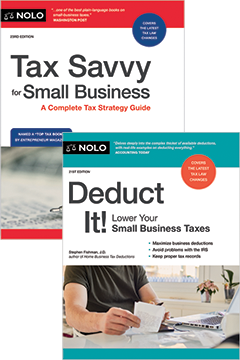Each year, you can deduct the cost to you of all of the items you sold on eBay. For example, if you purchased 400 troll dolls for $800 and you sold half of these, you can deduct $400 as your "cost of goods." For eBay businesses that sell hundreds or thousands of items each year, the calculation can become very complex, especially if the goods are handmade or manufactured specifically for sale on eBay. In the latter case, several costs must be calculated in order to determine the cost of goods.
The cost of goods sold is calculated on Schedule C of your tax return. The IRS illustrates this calculation on its website — see lines 35 through 42 of a sample Schedule C. In summary, the lines are completed as follows:
-
Line 35. If you are buying and selling merchandise, list the cost to you of the inventory of merchandise on hand at the beginning of the year. Usually this amount is identical to the prior year's closing inventory. If it isn't, you must explain why to the IRS. If this is your first year of operations, beginning inventory would be zero. If you are a manufacturer or producer of goods — for example, you manufacture handmade clothing for sale on eBay — include the total cost of raw materials, work in process, finished goods, and materials and supplies used in manufacturing the goods, but only those that were part of inventory at the beginning of the year. The IRS provides an explanation on valuing inventories at its website.
-
Line 36. Here you provide the cost of all merchandise you purchased during the year. If you manufactured goods for sale, include the costs of all raw materials you purchased in the year that were necessary to manufacture those goods. Subtract the cost of any items withdrawn for personal use.
-
Line 37. If you manufacture goods for sale, calculate labor costs: the amounts paid to employees for manufacturing. Do not include any amounts paid to yourself. If you are simply reselling merchandise and not creating new products, you will not have labor costs associated with your inventory. Of course, if you have employees that are not involved in manufacturing items for sale, their labor costs will be deducted elsewhere on the tax return and are not included in the cost of goods sold.
-
Line 38. If you manufacture goods for sale, list the amount paid for materials and supplies, such as hardware and chemicals, used in manufacturing goods.
-
Line 39. If you manufacture goods for sale, you can list additional costs such as containers and packages that are part of the manufactured product, costs of freight to bring in supplies, and overhead expenses — for example, rent, heat, light, power, insurance, depreciation, taxes, and maintenance — that are direct and necessary manufacturing expenses.
-
Line 40. Total lines 35 through 39, which will represent the total cost of inventory your business held in the year.
-
Line 41. On Line 41, you enter the value of the inventory unsold at the end of the year. Keep in mind that the value of the remaining inventory is not the price you plan to sell it for; it is the amount you paid for it or, if you are a manufacturer, invested in it. This amount will become your beginning inventory for the next year — that is the number you will use on Line 35 of the following year's tax return. Note that most businesses do a "physical" inventory at the end of the year — that is, actually count and record the type and number of each remaining inventory item. The results of this work will provide the basis for the year-end inventory calculation. Physical inventories also allow you to inspect and discard inventory if it is damaged or no value, thereby "writing it off" of year-end inventory and increasing the costs of goods sold deduction. A physical count also will alert you to items missing from your inventory.
-
Line 42. On Line 42, you subtract the amount listed on line 41 (ending inventory) from line 40 (all inventory costs). The result is the amount you claim as your cost of goods deduction.
Because of the potential complexity in managing inventories, especially manufacturing inventories, many eBay entrepreneurs use software such as QuickBooks or Microsoft Office Accounting in conjunction with spreadsheets or auction management software (see Auction Management Tools).



